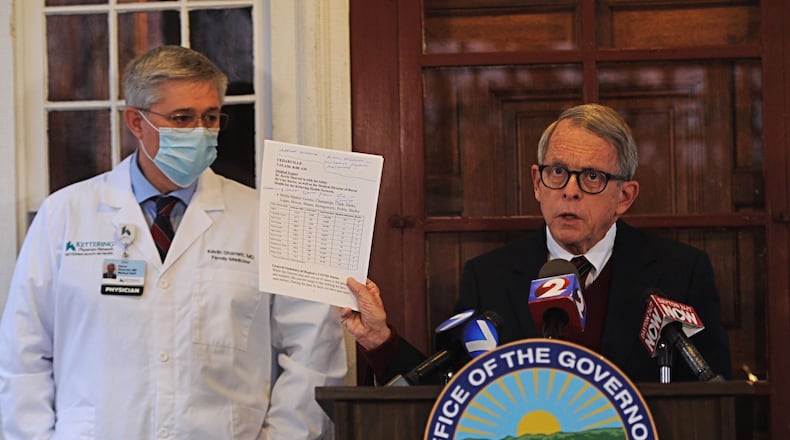“While fewer of our young people get sick from COVID, the evidence shows they are significant carriers,” DeWine said.
The state is hoping to vaccinate students before colleges and universities go on summer break. Most of the vaccines being made available to college students will be the Johnson & Johnson vaccine, which is only one dose.
“By offering vaccinations on college campuses we believe more students will opt to get the vaccine and they’ll get it with their peers,” the governor said.
University of Dayton officials said the university is an enrolled vaccine provider in the state and will release information about providing vaccines once it is available.
The state will also begin working with businesses, labor unions and other organizations to vaccinate employees at work locations.
“We think this will increase the percentage of those who choose to be vaccinated,” DeWine said.
Starting April 12, vaccine providers in Ohio will be able to use 25% of their doses to vaccinate their own employees.
The governor noted that while the state will always aim to vaccinate its most vulnerable residents, Ohio has “an obligation and an imperative to vaccinate people as quickly as we can and to increase the vaccination rate.”
As the state gets more COVID vaccines, areas with a spike in cases may see an increase in shipments, DeWine said.
The governor expressed concerns Thursday as Ohio continues to see an increase in coronavirus cases and cases stemming from variants.
Ohio reported 2,475 cases Thursday, making it the third day in the last week that the state has recorded more than 2,000 daily cases.
Over the last few weeks, the state was leveling off around 1,500 cases a day. As of Thursday, Ohio’s 21-day average is 1,672 cases a day.
“We are in fact seeing increase COVID activity here in Ohio,” ODH Chief Medical Officer Bruce Vanderhoff said.
As of Tuesday, the CDC was reporting 310 variant cases in Ohio. On Thursday, that number had increased to 620, Vanderhoff said.
As of Mach 12, the state had reported 92 variant cases, and 173 variant cases as of March 19.
Ohio officials have also been monitoring cases in neighboring states, particularly in Michigan, which has the second highest number of variant cases in the country.
As of Tuesday, Michigan had 1,238, according to the CDC.
While all areas of Ohio are seeing an increase in cases, Vanderhoff and DeWine said the state’s northern border with Michigan is seeing more activity.
With cases increasing, the state’s average cases per 100,000 is also going up.
Ohio reported 167.1 case per 100,000 people on Thursday, compared to 146.9 per 100,000 last week. It’s the second straight week the metric has increased.
Previously, DeWine announced that all public health orders will be lifted in Ohio if the state report less than 50 cases per 100,000 for two weeks.
More than 1,000 people with coronavirus were hospitalized in Ohio as of Thursday, according to ODH. It’s the first time in more than two weeks that the number of hospitalized COVID patients surpassed 1,000.
Almost 3.5 million people in Ohio have received at least one dose of the vaccine and 2,006,372 people have completed their vaccination.
About the Author

